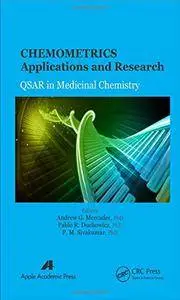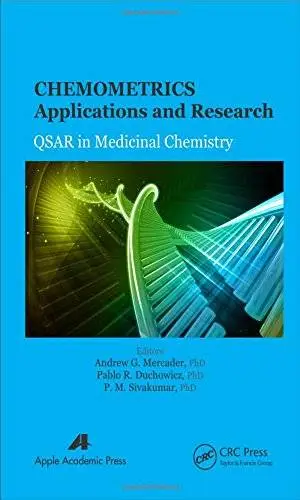Chemometrics Applications and Research: QSAR in Medicinal Chemistry by Andrew G. Mercader, Pablo R. Duchowicz, P. M. Sivakumar
2016 | ISBN: 1771881135 | English | 458 pages | PDF | 54 MB
2016 | ISBN: 1771881135 | English | 458 pages | PDF | 54 MB
This important new book provides innovative material, including peer-reviewed chapters and survey articles on new applied research and development, in the scientifically important field of QSAR in medicinal chemistry.
QSAR is a growing field because available computing power is continuously increasing, QSAR’s potential is enormous, limited only by the quantity and quality of the available experimental input, which are also continuously improving. The number of possible structures for the design of new organic compounds is difficult to imagine, and QSAR helps to predict their activities even before synthesis.
The book provides a wealth of valuable information and:
• Presents an overview of recent developments in QSAR methodologies along with a brief history of QSAR
• Covers the available web resource tools and in silico techniques used in virtual screening and drug discovery processes, compiling an extensive review of web resources in the following categories: databases related to chemical compounds, drug targets, and ADME/toxicity prediction; molecular modeling and drug designing; virtual screening; pharmacophore generation; molecular descriptor calculation software; software for quantum mechanics; ligand binding affinities (docking); and software related to ADME/toxicity prediction
• Reviews the rm2 as a more stringent measure for the assessment of model predictivity compared to traditional validation metrics, being specifically important since validation is a crucial step in any QSAR study
• Presents linear model improvement techniques that take into account the conformation flexibility of the modeled molecules
• Summarizes the building processes of four different pharmacophore models: common-feature, 3D-QSAR, protein-, and protein-ligand complexes
• Shows the role of different conceptual density functional theory based chemical reactivity descriptors, such as hardness, electrophilicity, net electrophilicity, and philicity in the design of different QSAR/QSPR/QSTR models
• Reviews the use of chemometrics in PPAR research highlighting its substantial contribution in identifying essential structural characteristics and understanding the mechanism of action
• Presents the structures and QSARs of antimicrobial and immunosuppressive cyclopeptides, discussing the balance of antimicrobial and haemolytic activities for designing new antimicrobial cyclic peptides
• Shows the relationship between DFT global descriptors and experimental toxicity of a selected group of polychlorinated biphenyls, exploring the efficacy of three DFT descriptors
• Reviews the applications of Quantitative Structure-Relative Sweetness Relationships (QSRSR), showing that the last decade was marked by an increase in the number of studies regarding QSAR applications for both understanding the sweetness mechanism and synthesizing novel sweetener compounds for the food additive industry
The wide coverage makes this book an excellent reference for those in chemistry, pharmacology, and medicine as well as for research centers, governmental organizations, pharmaceutical companies, and health and environmental control organizations.



